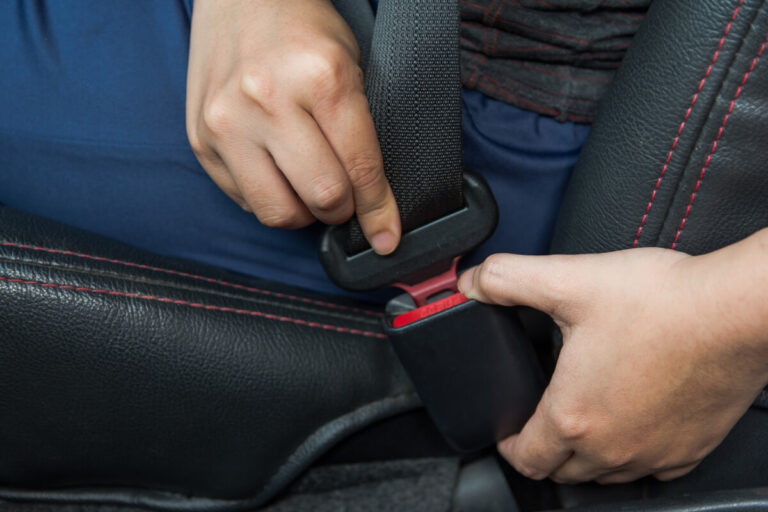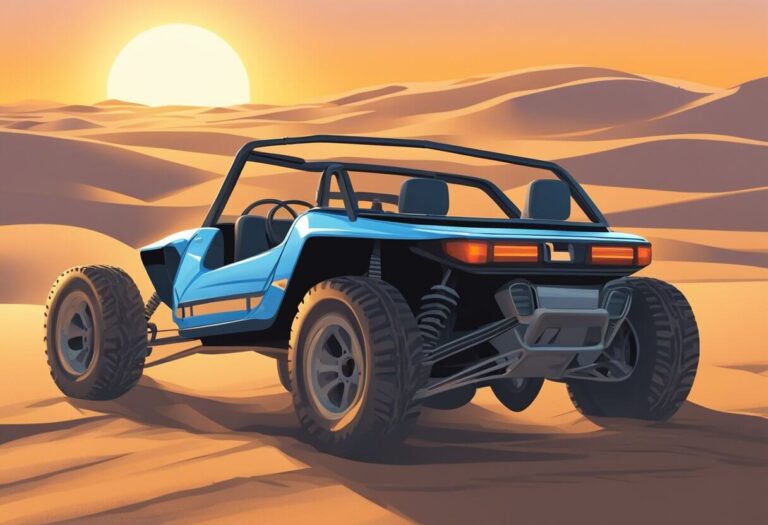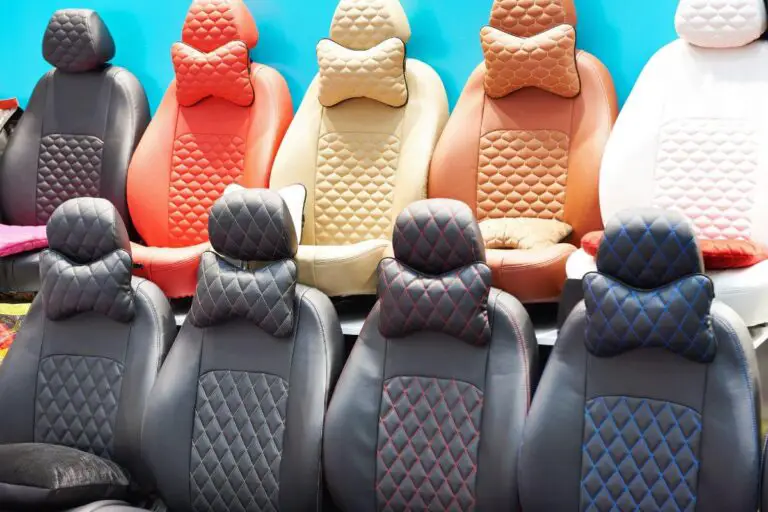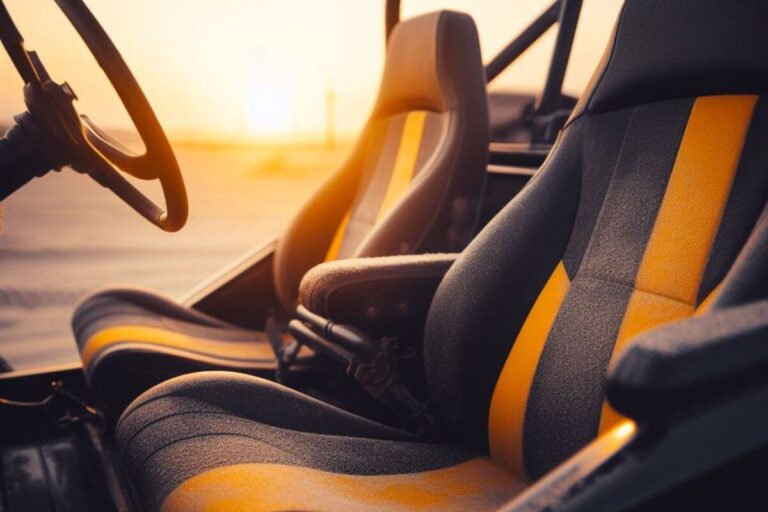Dune Buggy Seats: Reviews of Top Brands, Customization & Install

Have you ever climbed into a dune buggy and felt like you were sitting on it rather than in it? Those minimalist factory seats might be lightweight, but they often lack the comfort and support needed for off-road adventures.
Upgrading your buggy’s seats is one of the best ways to improve your ride. But with so many types, sizes, and options to consider, how do you choose the right dune buggy seats?
The perfect dune buggy seats provide a secure, comfortable fit for your specific buggy model and riding style.
In this in-depth guide, we’ll cover:
- The pros and cons of different dune buggy seat materials and styles
- Key factors in selecting seats for proper fit, safety, and support
- Top seat types and brands for recreational, racing, and rock crawling
- Customization options to tailor seats to your priorities
- Tips for proper installation, maintenance, and getting the most out of your seats
Let’s start by looking at the unique seating considerations for these rugged off-roaders.
What Makes Dune Buggy Seating Different?
Unlike regular cars, dune buggies don’t come equipped with reclining seats, headrests, and other creature comforts. Their simple benches are designed to be lightweight and provide basic occupant restraint for recreational off-roading.
But for dune buggy enthusiasts who take on more intense terrain, factory seats leave a lot to be desired in terms of comfort, security, and adjustability. The jolts, bumps, and vibrations of off-road driving require seats that can provide proper lumbar, lateral, and leg support.
Most dune buggy seats consist of a metal frame covered in fiberglass, vinyl or fabric upholstery. While universal seats will work, choosing application-specific seats designed for your buggy’s make and model will ensure an optimal fit.
Bench-style seats are common in 2-4 passenger buggies, allowing multiple people to sit side-by-side. For single occupant vehicles, individual bucket seats are more appropriate.
Fiberglass VS. Upholstered Dune Buggy Seats
Fiberglass and upholstered vinyl/fabric seats each have their own advantages and drawbacks when it comes to comfort, durability, and cost. Let’s compare them:
Fiberglass Seats
Pros:
- Extremely durable and damage resistant
- Provide firm support and don’t sag over time
- Resist absorbing water/moisture
- Easy to clean
Cons:
- Can be uncomfortable on long off-road trips
- Limited adjustability and recline options
- Can crack if subjected to heavy impacts
- Lack of cushioning and breathability
Popular fiberglass seat brands include Procar, Beard, and DJ Safety. Many are molded for application-specific buggy models like VW, Dune Buggy, and Manx. Custom graphics and gel coat colors are available.
Vinyl and Fabric Upholstered Seats
Pros:
- Softer, more comfortable cushioning
- Excellent lateral and lumbar support options
- Upholstery absorbs vibration and shock
- More recline adjustability
Cons:
- Not as durable as fiberglass models
- Upholstery can wear, tear, or fade over time
- Susceptible to damage from water/sun exposure
- Minimal contouring or lateral support
Top upholstered seat brands include MasterCraft, Corbeau, and Sparco. Available in vinyl and rugged automotive fabrics. Choose from different seat back heights and cushion contours.
Suspension Seats Enhance Off-Road Comfort
For increased comfort across rugged terrain, many choose dune buggy seats equipped with suspension systems. These seats use sliding rails and shock absorbing springs to isolate occupants from jolts and vibration.
By allowing the seat to move independently from the floor pan, suspension seats greatly reduce back and spinal compression caused by harsh bumps and holes. Brands likePRP Seats offer suspension seat models designed specifically for off-road use.
Low-back seat models are popular for dune buggies, maximizing freedom of movement for turning your head to see obstacles and keep an eye on passengers. High-back models with headrests further enhance whiplash protection for more intense motorsports.
Choosing Between Bench VS. Bucket Seats
Bench-style seats allow multiple passengers to sit side-by-side. Common bench widths include:
- 42″ 2-person bench
- 53″ 3-person bench
- 81″ 4-person bench
Bench seats must be securely bolted to the vehicle floor for safety. Some have removable middle sections to accommodate a center console.
Individual bucket seats are contoured to hold a single occupant in place, providing excellent lateral support during hard cornering. Popular options include fixed-back, reclining, and suspension bucket seats.
Key Factors in Finding the Right Dune Buggy Seats
Beyond the seat material and style, you’ll want to consider these key factors:
Finding the Right Size
Dune buggy seats come in a range of widths, depths, and back heights. Measure across your buggy’s interior at the point where seats will be mounted.
Seats should fit snugly from one side to the other without excessive gapping. Make sure the seat back height won’t interfere with roll bars and allows unobstructed head movement.
Match the number of seats to passenger capacity. In bench seats, each person needs at least 18″. Allow extra room if passengers will wear bulky off-road gear.
Proper Seat Mounting
Dune buggy seats must be securely mounted to properly handle rugged riding conditions. Most bolt directly to the floor pan using mounting brackets and hardware matched to the seat style.
Seats designed for specific buggy makes like VW will bolt to existing mounting points. For custom buggies, you may need to weld additional brackets. Use at least 4 bolts per seat for a solid attachment.
Riding Comfort and Support
The ideal dune buggy seat cradles you comfortably while providing sufficient lumbar, side, and thigh support to limit fatigue on long off-road excursions.
Look for contoured seats with pronounced side bolsters that hold you in place during hard cornering and side-slope driving. Suspension seats also enhance comfort.
Lumbar support protects your lower back from compression and irritation caused by jolts and vibration. Side cushioning keeps your shoulders aligned during twisting maneuvers.
Safety Restraints
Most dune buggy seats accommodate both lap belts and 2″ or 3″ harness straps for secure restraint. Proper harness installation is crucial – they should anchor to the floor, not the seat alone.
5- and 6-point harnesses with anti-submarine straps provide maximum protection for intense racing use. Used with HANS devices, they greatly reduce whiplash and spine/brain injuries during accidents.
Matching Your Riding Style
How you plan to use your dune buggy will impact your ideal seats. Weekend recreational buggies can get by with basic benches or simple fiberglass seats.
For frequent off-roading on uneven terrain, choose suspension seats or models with pronounced bolsters and lumbar support. They’ll provide comfort on long days navigating ruts and hills.
Racers require seats tailored for extreme cornering, acceleration, and impacts. Look for tight bolsters, deep thigh/kidney support, and compatibility with 4+ point harnesses and head restraints.
Rock crawlers need exceptional lumbar and lateral cushioning to absorb severe articulation and wheel impacts. Sturdy side bolsters prevent sliding on off-camber slopes.
Top Dune Buggy Seat Manufacturers and Recommendations
These top brands offer a wide range of excellent seat options for dune buggies and off-road vehicles:
1. Procar By Scat
Top Features: Fiberglass bucket seats and rear benches, variety of color options, sculpted to fit most dune buggies, economical pricing
Rally Legend: Their most popular fiberglass seat featuring deep shoulder supports and molded lumbar support. Available in standard and extra wide sizes. Comes in blue, black, gray and white.
Pros: Excellent value, durable fiberglass construction, integrates with factory mounting points, colors match most interiors
Cons: Can be uncomfortable on very long drives, limited recline adjustability
2. Corbeau
Top Features: Diverse vinyl and fabric upholstered seats, excellent bolstering, reclining and suspension options, lumbar and harness slots
Baja RS: Features composite shell with reclining vinyl upholstery. Includes adjustable headrest and side bolsters. Available in black, gray and tan.
Pros: Superior comfort from cushy reclining design, headrest provides whiplash protection, durable upholstery, padded lumbar area
Cons: Recline mechanism prone to breaking, more expensive than basic options
3. PRP Seats
Top Features: Known for oversized bolsters, multi-axis suspension, tailored for extreme off-road use
RG Model: Popular reclining suspension seat with 3″ suspension travel. Includes side harness slots and adjustable headrest. Upholstered in black, gray or tan vinyl.
Pros: Superb off-road shock absorption, deeply contoured bolsters secure occupants, compatible with harnesses, reclines for comfort
Cons: Expensive compared to rigid mounted seats, limited colors and upholstery options
4. Sparco
Top Features: Exceptional bolstering and lateral support, ideal for racing applications, kidney and thigh cushions
Sprint: Their popular FIA approved racing seat featuring built-in headrest and harness slots. Upholstered in black, red, blue or gray fabric.
Pros: Unmatched cornering and g-force support, compatibility with 6-point harnesses, integrates with head/neck restraints
Cons: Very expensive, may require custom mounting brackets, not intended for recreational use
Custom Seat Options for a Tailored Fit
Beyond picking a brand and model, many dune buggy owners opt to customize seats for the perfect fit:
Custom Upholstery: Choose custom colors and durable vinyl/fabric types so seats coordinate with your vehicle’s interior. Add custom embroidery or logos.
Lumbar Support: Increase lower back comfort with extra lumbar padding and air bladders that conform to your spine.
Harness Slots: Have slots added to accommodate 4-point, 5-point and 6-point racing harness configurations. Reinforce slot openings.
Additional Cushioning: Increase or decrease seat thickness in key areas (thigh support, kidney bolsters, lateral shoulders etc.) based on your fit requirements.
Racing Applications: Specify compatible seat mounts, anti-submarine belt slots, and compatibility with head/neck restraints when ordering.
Having seats custom-built to your specifications costs more but ensures they provide the fit, comfort features, and security you require.
Proper Installation for Safety and Security
Even the best seats will fall short if not properly secured to your buggy:
- Use the manufacturer’s recommended mounting hardware for your specific seat model. Grade 8 bolts are a must.
- Securely bolt seats through bottom and back mounting points. Use fender washers to distribute stress.
- Tighten bolts to the proper torque – typically between 35-50 ft-lbs depending on bolt size.
- Ensure seats lock securely into sliding rail or bracket systems if present. Verify latches engage.
- Confirm seats are centered and have equal support/clearance on both sides.
- Always test seats at low speeds before aggressive driving. Check for shifting and re-tighten if needed.
Take the time to correctly install seats to handle rugged conditions and keep occupants safe. Don’t rely solely on upholstery or side bolsters to hold passengers in place.
Caring for Your Seats to Maximize Durability
Dune buggy seats take a lot of abuse from sun, dirt, mud and daily use. Here are some tips to make them last:
Vinyl: Use vinyl cleaner and plastic/rubber protectant to keep seats looking new. Avoid harsh cleaners. Condition regularly to prevent cracking.
Fabric: Vacuum to remove loose dirt. Use a mild upholstery cleaner on stubborn stains. Don’t saturate fabric with liquid.
Fiberglass: Wash with soap and water. Wax to restore glossy finish. Repair any cracks or damage to prevent expanding.
General Tips:
- Install water-resistant seat covers for heavy-use buggies.
- Park out of direct sunlight to minimize UV damage and fading.
- Check mounting hardware weekly and tighten if needed.
- Consider professional upholstery cleaning every few years.
With regular care, you can get years of service from quality seats. Replace badly worn or damaged upholstery as needed.
Get the Perfect Fitting Dune Buggy Seats for Comfort and Safety
The right seats can vastly improve the ride comfort, performance, and safety of your dune buggy. Stock benches don’t provide the security or cushy support needed for aggressive off-roading.
Choose seats suited for your specific buggy model and riding style. Fiberglass seats offer durability, while upholstered vinyl and fabric provide more comfort for long days driving off-road. Custom-fitted suspension seats are ideal for limiting fatigue.
Measure your buggy’s interior and compare to seat dimensions to get a proper width and height match. Ensure seats bolster occupants while allowing full range of head movement.
Install seats securely using manufacturer-recommended hardware torqued to spec. Take the time to properly mount them to handle any terrain.
By selecting the perfect seats for your needs, installing them correctly, and caring for them over long-term use, you’ll enhance your off-road adventures and safety for years of grinning from dune-to-dune.




